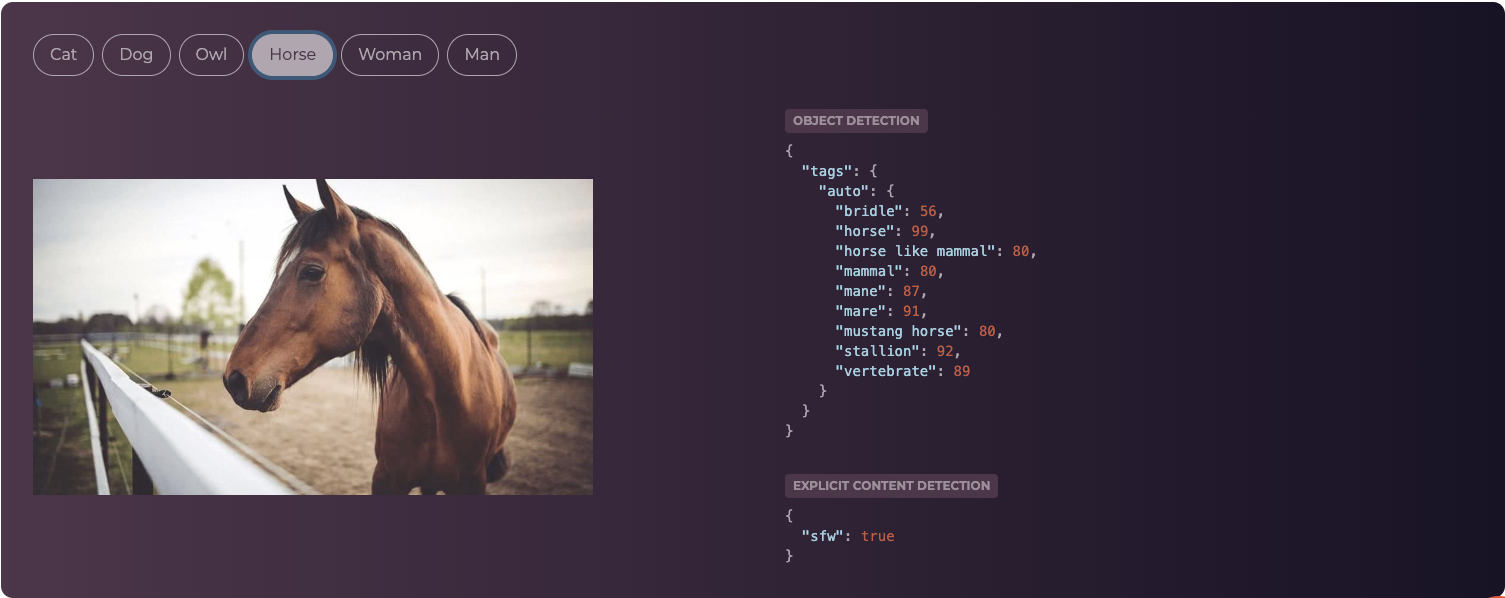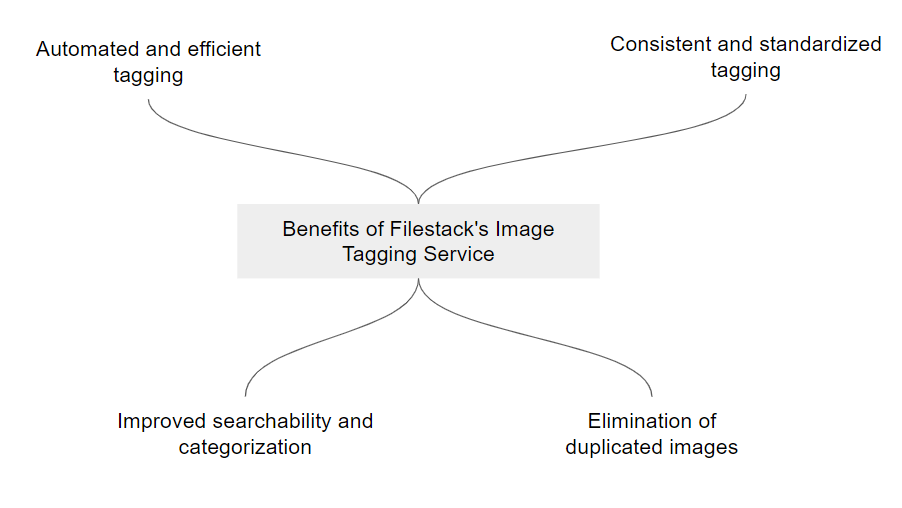Imagine a time when categorizing and arranging all your digital images isn’t a time-consuming and tiresome chore. Imagine a tool allowing you to quickly tag and categorize your pictures and videos, freeing up your time and brainpower for more creative projects. Both software applications and consumers have long struggled with manually tagging visual content. This is why automatic image tagging software is a life-saver! In this article, we will explore everything you need to know about automatic image tagging software.
Image tagging in software development
By giving image tags, you may make them searchable and categorized by specific keywords. Furthermore, since it can increase the usefulness and discoverability of images in software applications, it’s crucial in creating software.
The use of image tagging in software applications has various advantages. For instance, image tagging can make it easier and faster for users to find the required images.
Image library management challenges
Image library management is the process of organizing, storing, and retrieving images. It can be challenging work, particularly for companies with huge image libraries.
The following are some typical problems in image management libraries:
- Finding particular images can be challenging, especially if your library is huge and poorly structured.
- Inability to efficiently organize and search for photographs. For example, finding the needed images can be challenging if they are not correctly categorized.
- Duplicate photos can frequently be found in image libraries.
Factors to consider when choosing an image tagging software
Moreover, the following are a few factors to select the right image tagging software.
Performance and accuracy: It should have the capacity to quickly and accurately tag photos.
Cost-effectiveness and scalability: The software should be able to grow with your needs as your image library does.
Features and customization options: It should contain the functionality required to tag your pictures as desired.
Integrations with other software programs: The program you use should be compatible with other programs.
Ease of use and customer support: It should be simple to use, even if you don’t have any prior expertise with image tagging.
Integrating Filestack’s image tagging service
Additionally, Filestack offers a RESTful API, which allows seamless integration of image tagging into various software applications. Moreover, you have the flexibility to customize your tagging preferences and conveniently upload and receive tagged photos through the API.
Moreover, Filestack offers pre-built plugins and SDKs for well-known frameworks like React, Angular, and Vue. With just a few lines of code, these SDKs make incorporating image tagging into your application simple.
The following are steps to take to integrate Filestack’s image tagging services.
- Create an account on Filestack to obtain your API key.
- For the programming language of your choice, install the Filestack SDK.
- Create a new Filestack client object in your code and pass it your API key.
- Call the tag method using the client object and the image URL or file location.
- An array of tags that have been assigned to the image files will be returned by the tag method.
The following is a demonstration of how to tag a picture in Python using the Filestack SDK:
import filestack
# Create a Filestack client object
client = filestack.Client('YOUR_API_KEY')
# Tag an image
tags = client.tag('https://example.com/image.jpg')
# Print the tags
print(tags)How Filestack as an image tagging software works
To recognize and tag images, Filestack combines computer vision and machine learning. The software trains its algorithms on an extensive set of hand-annotated photos. The algorithms can be used to recognize and tag new images after they have been trained.
Benefits of Filestack’s image tagging service (for image library management)
The following are some benefits of automated image tagging software from Filestack.
- Can automatically add information and keywords to images. As a result, organizations can save a lot of time and effort by eliminating the need to tag images manually.
- Uses a uniform and consistent tagging format. This ensures that all the images in a library are categorized uniformly, making locating and utilizing them simpler.
- Enables faster image search by keyword, topic, or other criteria. This can assist organizations in increasing the discoverability of their photographs and increasing user accessibility.
- Finds and removes duplicate images in a library. This can assist companies in saving space and enhancing the functionality of their photo management software.
How to use Filestack’s image tagging (or image library management)
With the help of Filestack’s image tagging software, developers can streamline tagging images with useful labels. This can be useful for many things, such as:
- Organizing your images
- Searching for images
- Categorizing images
- Automating content moderation
Create a Filestack account and obtain an API key before using the image tagging feature. Following that, you can use the image tagging process listed below to tag your photos.
- Upload your photos on Filestack.
- Then, Invoke the Image Tagging API.
- A JSON response from the API will contain a list of tags for each image.
- Then, you can search for, classify, and arrange your images using these tags.
As you can see, the following is an example of how to use the Image Tagging API:
curl -X POST \
-H "Authorization: Bearer YOUR_API_KEY" \
-H "Content-Type: application/json" \
-d '{
"file": "https://example.com/image.jpg"
}' \ https://api.filestack.com/v2/transformations/taggingThe following is an example of the API’s response:
{
"tags": [
"cat",
"animal",
"furry"
]
}Then, you may search for, classify, and arrange your images using these tags. For instance, you could make a folder for all the photos with the tag “cat” in it. The tags could also be used to look for images that match specific requirements. Finally, You could, for instance, look up all of your photos with the tags “cat” and “furry” in them.
Learn more about Filestack image tagging in our comprehensive documentation.
Image recognition algorithms
Image recognition algorithms are used to identify objects, people, and scenes in images.
The following are the two primary categories of picture recognition algorithms.
- ML algorithms train on an extensive image dataset. By identifying patterns in the photos, the model learns to recognize items.
- Deep learning techniques that use artificial neural networks to identify objects.
Filestack’s game-changer image tagging service combines computer vision algorithms, deep learning approaches, and machine learning models to recognize items in images. The service can recognize more than 1,000 different items, such as people, animals, vehicles, and objects.
Performance and security considerations
The image tagging service from Filestack has a fast performance. The service can scale to handle millions of photographs per day and has an average latency of about 100 ms for most images.
Security is also a major priority for Filestack. To safeguard photos, the service employs a number of security methods, such as:
- Data encryption: Both in transit and at rest, all photos are encrypted.
- Access restrictions: Only people with permission can view the photos.
Filestack complies with all applicable privacy laws concerning data protection, such as the General Data Protection Regulation (GDPR).
Filestack conforms with the General Data Protection Regulation (GDPR) and all other relevant privacy laws. Moreover, Filestack adheres to industry standards for user privacy protection, such as:
- Requesting user permission before gathering or processing their info.
- Allowing consumers to access their data and exercise control over how they use it.
- Preventing illegal use, access, or disclosure of user data.
Conclusion
Filestack’s image tagging software is a powerful tool that can help businesses of all sizes to organize and manage their image libraries more efficiently and effectively. It is simple to do a variety of functions with Filestack. For example, managing image permissions, searching for images, and tagging images. Additionally, Filestack provides numerous connections with other well-known software programs, making it simple to use Filestack’s photo tagging software with your current workflow.
You can sign up for a free trial today to see how Filestack can help your business.
FAQs
What is automatic image tagging software?
Automatic image tagging software is a type of software that automatically tags images with keywords.
What are the benefits of using automatic image tagging software?
By automatically adding image tagging keywords, they can help you save time and effort. Consequently, this can help you organize your photo albums more effectively and simplify the process of finding the images you need.
What are some of the most popular free photo management software programs?
Some popular ones include Filestack, Adobe Lightroom, ACDSee Photo Studio, and Google Photos.
How do I use automatic image tagging software?
Depending on the software you’re using, using automatic image tagging software takes a different approach. However, most image tagging tools let you import images, choose the keywords you want to use, and then tag multiple images automatically.
Shanika Wickramasinghe is a software engineer by profession and a graduate in Computer Science. Her specialties are Web and Mobile Development. Shanika considers writing the best medium to learn and share her knowledge. She is passionate about everything she does, loves to travel, and enjoys nature whenever she takes a break from her busy work schedule.
Read More →


